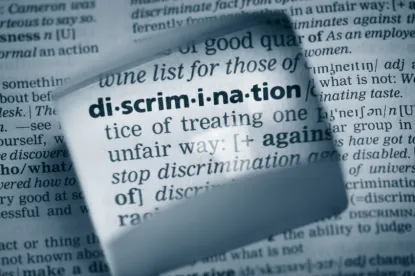Does this Herald the End of the Golden Age of Summary Judgment for Employers?
Late last week, the often employer-friendly Seventh Circuit Court of Appeals tossed out the basis upon which discrimination claims have been analyzed for almost a generation. The decision, Ortiz v. Werner Enterprises (Case No. 15-2574), foreshadows dramatic and huge repercussions for employers in Indiana, Illinois and Wisconsin.
Background on Direct and Indirect Tests
For more than 20 years, courts in the Seventh Circuit have recognized two avenues of proving discrimination: the direct and indirect methods. Before last week, a plaintiff-employee in the Seventh Circuit could prove discrimination under the “direct method” by presenting “direct” evidence of discrimination, or by presenting circumstantial (i.e. “indirect”) evidence – such as fashioning a “convincing mosaic” by which a jury could infer intentional discrimination by the decisionmaker. Alternatively, a plaintiff-employee could try to proceed under the “indirect method,” which was based on the familiar burden-shifting analysis originated by the U.S. Supreme Court in McDonnell Douglas Corp. v. Green, 411 U.S. 792 (1973).
Confused? So was the Seventh Circuit, which has spent years trying to wrangle these various tests – becoming increasingly frustrated with the legal jujitsu required to navigate them. Over time, lawyers used the varying methodologies as needed to advance the best interests of their clients. For example, employers often succeeded in demonstrating an employees’ failure to comport with the requirements of the various tests. Ultimately, the issue came to a head in Ortiz – resulting in the Seventh Circuit tossing the whole whack-a-mole procedure overboard. Indeed, the court is so completely soured on the use of “convincing mosaic” as a legal standard that the judges never want to see it again; vowing that any decision based on that phrase will be subject to summary reversal.
The Ortiz Opinion
The issue lying at the heart of Ortiz is that the various methods sorted evidence into different piles, which then were evaluated by different standards. As an example, the plaintiff in Ortiz claimed he was fired because of his Mexican ethnicity. Among other evidence, he pointed to various ethnic slurs against him during his employment. Applying the old standards of direct and indirect evidence, the district court granted summary judgment in favor of the employer. It noted, for example, that the employee had not built a “convincing mosaic” of evidence, because the alleged racial slurs were not connected to the plaintiff’s discharge.
The Seventh Circuit reversed the district court’s denial of summary judgment and sent the case back for trial. In doing so, it made clear that “evidence is evidence:” from the court’s perspective, all of the evidence should be evaluated together in a unified inquiry – a process that it regarded as fully consistent with the standards of McDonnell Douglas. In tossing out the direct/indirect methodology, the Court reiterated the fundamental standard: “whether the evidence would permit a reasonable factfinder to conclude that the plaintiff’s race, ethnicity, sex, religion, or other proscribed factor caused the discharge or other adverse employment action.” In other words, evidence of discrimination must be considered as a whole and no longer can be compartmentalized or evaluated by different standards.
So for employers who’ve been puzzled by their lawyers talking in terms of direct and indirect methods and evidence, those distinctions have been erased by the Seventh Circuit. The trouble is that those distinctions oftentimes helped employers get out of cases early and avoid trial. Now, evidence that previously might not have been considered by a court (such as comments disconnected from an adverse employment action) may be tossed into the mix – raising the stakes for employers. While the full impact of the decision is unclear, there is no doubt that Ortiz is a game-changer within the Seventh Circuit, and that it may be more difficult in the future for employers to successfully obtain summary judgment.




 />i
/>i
